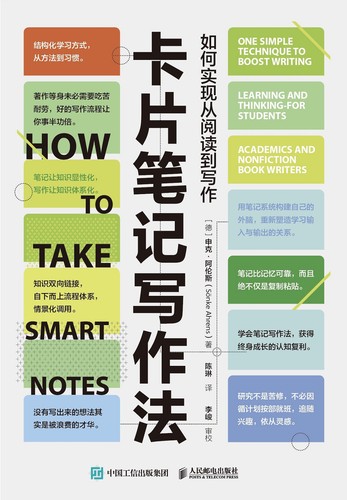Sergey Machulskis ha recensito How to Take Smart Notes di Sönke Ahrens
Really liked it
4 stelle
I have mixed feelings about this book. It's well-written on a small scale (pages, chapters) but the overall structure is a mystery to me.
Did I find a way how to organize a mess in my notes? Not exactly, but I've found some good hints.
Good bits:
- GTD doesn't work for non-linear writing. Academic writing is non-linear. I was taught otherwise.
- Organize your notes around the context in which they're going to be useful. Not by topic. Organizing by topic is almost the same as organizing them by year. Looks neat, but it's hard to find a note you need right now.
- Quotes are useless. If you need to apply the information you've found somewhere, rewrite it in your own words.
- Brainstorming is useless. Sure, it produces ideas, but they're going to be of a very low quality.
Bad bits:
- There's a lot of barely related information. The book tries …
I have mixed feelings about this book. It's well-written on a small scale (pages, chapters) but the overall structure is a mystery to me.
Did I find a way how to organize a mess in my notes? Not exactly, but I've found some good hints.
Good bits:
- GTD doesn't work for non-linear writing. Academic writing is non-linear. I was taught otherwise.
- Organize your notes around the context in which they're going to be useful. Not by topic. Organizing by topic is almost the same as organizing them by year. Looks neat, but it's hard to find a note you need right now.
- Quotes are useless. If you need to apply the information you've found somewhere, rewrite it in your own words.
- Brainstorming is useless. Sure, it produces ideas, but they're going to be of a very low quality.
Bad bits:
- There's a lot of barely related information. The book tries to be everything: advice on writing in general, rant on the education system, a collection of cognitive biases. I don't think it really needs all this. As I understood, the original inventor of the method had the same problems with his writing. The proposed method of writing forces you to jump from thought to thought using associations. The text looks very natural for a writer but not for a reader.
- I've read this (twice for several chapters) and still don't understand why the Zettelkasten method works. It explains how it works and what happens if you use it, though.
- The system was invented by a social "scientist". It's a pity it wasn't invented by someone who produces useful writing. From my point of view, it was invented by a guy who lectures birds on how to fly.
- Sometimes the author says "the original inventor did this and this so you should too". It's followed by a questionable explanation. Should I say it looks weird? Times changed.
I really recommend it if you:
- Don't know why the education system is broken
- Haven't heard about cognitive biases and mental models
- Have no idea how to make good notes




